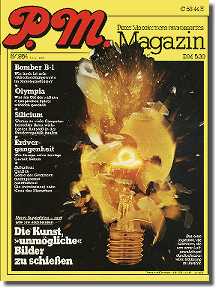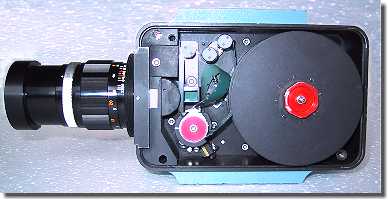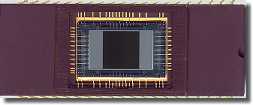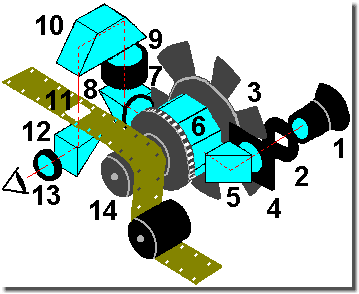SloMo - High-speed imaging, high-speed cameras
High-speed Vision, Slow Motion and High Speed Video - what's that?
Emerged earlier than one might expect:
Wet match slowed down 200 times
The first recorded usage of high-speed photography was due to one of the earliest pioneers of photography, William Henry Fox Talbot. It happened in 1852. The slow shutters and small aperture lenses available in those days were satisfactory for pictorial photography of still subjects but still inhibited the study of moving subjects. Fox Talbot was interested in making photographs of objects in motion and searched for suitable methods. The alternative to slow shutters and lenses was the use of a short duration, high intensity light source the object could be illuminated with.
To create such a photographic image a camera with an open shutter would view the subject in a darkened room. It was known that the Leyden jar, the forerunner of our today's capacitor, could store a high voltage, which could be released suddenly to form a short duration, intense spark.
In a demonstration to the Royal Society, Fox Talbot set up a page of The Times newspaper on a wheel, which could be turned at high speed. Using a spark to illuminate the page surface briefly, he photographed a small area of the fast moving print. On th development negative the newspaper characters could be read clearly, the motion of the subject had been effectively frozen and high-speed photography had been born.
According to: High Speed Photography and Photonics, p. 9, edited by Sidney F. Ray, 1997, Focal Press (and SPIE 2nd edition 2002 ISBN 0-8194-4527-4).
The history
Chronophotography and slow motion
Early the new medium photography tempted to be used in entertainment but also in science. An old mystery was solved soon using plate cameras delayed released one after each other by ripcords.

Eadweard Muybridge: time shifted photos with cascaded plate cameras
Because since a long time it was supposed that there may be a phase during the gallop of a horse none of its hoofs is touching the ground. But not before Eadweard James Muybridge in 1878 it was proved photographically. Thus he laid the foundations of photographic motion analysis based on the principle of time extension cameras.
Photography and stroboscopy
Everybody would like to claim Dr. Harold Eugene Edgerton
(1903-1990) for the best known high-speed photographer and pioneer.
During his activity as professor of the MIT he developed many
high-speed cameras and special cameras. Also he engineered many
stroboscopes and illumination devices for those by his own.
You can find a lot of his photos e.g. typing in the term
»edgerton« in an Internet image search.
Besides he pushed numerous other epoch-making photography techniques.
The fascination of motion
High-speed photography
Effective shots of this kind cause certain expenditure, demand a lot of patience and the required fine works and tricks are not to underestimate.

Special effects, P.M. 8/1984
A lot of people think to have already seen a bulb exploding. But even if they noticed something, really seeing it, however, is not possible. The process is just too fast for human eyes. The picture of the English photographer Jay Myrdal provides an interesting impression.
To make the illusion perfect he put together three photos from different times and situations. The first photo with a long time exposure of some seconds, showing just the bulb socket and a special glow helix without the glass flask. Both other photos then were taken with the glass flask on, which was shot by an airgun bullet. In the second photo a long duration flash (duration 1/200 second) captured the scattered splinters as blurs, while in the third photo an extreme intensive short duration flash (duration 1/10 000 second) froze the splinters in their movement and caught them sharply.
50 trials were necessary for the title photo. The efforts behind will just get obvious, if one imagines that each light bulb had to be prepared painstakingly and time-consuming. The light bulbs were regularly dismantled. So the glass flask was carefully loosened from the socket and removed. Then the normal filament was replaced by a hand made one, which was powered by a transformer hidden outside the scene. The open light bulb operates some seconds and the glowing filament was photographed through a special filter. After that the glass flask was put on the socket again and was shot by an airgun bullet.
As trigger for both of the flash devices for photo two and three a microphone waiting for the sound of the smashing glass was used. To avoid to catch the airgun bullet in the picture as well, an electronic device delayed the start signal for the flash devices for such a span of time the bullet had been calculated to have left the scene.
According to P.M. in: Die Kunst »unmögliche« Bilder zu schießen (Engl.: The art of shooting »impossible« photos), issue 8/84, page 56pp.
Time slice and camera array technique
Exciting effect, also named bullet time or time morphing,
is similar to stroboscopy and is very well-known by the movie
The Matrix, also TV adverts and numerous scientific
features. The object stands still (more or less) and the
spectator's view fixes it or even turns around it. There is also
usage as dramatic time effect with smooth transition from normal
speed to super slow motion and back.
Done with a lot of (photo) cameras arranged - if necessary - in a
bow and triggered by a sequence plan simultaneously or delayed one after
another. And subsequent with almost endless image processing and post
processing.
Super slow motion
Extending to moving pictures is just a small step. Originally mainly established for technical-scientific clips in studio environment (illumination!) it spreads in out-door usage - on TV and in cinema. For instance in sport broadcasts one often notices the flicker (pumping) of artificial illumination then. In order to ensure the impression of movement frame rates of up to some hundred frames/sec are used.
The techniques of high-speed imaging
Overview

Stalex film high-speed camera: 3 000 frames/sec
Equipment of different conceptions to obtain images of
fast movements exists. Selection aspects are e.g. frame rates,
illumination demands, single frames/sequences, resolution/color
depth, ease of archives, evaluation at once in the field, mobility,
... And of course, expenditure and costs.
With frequencies of more than 160 frames/sec and a serial of least
three photos in a row or with more than 125 frames/sec with a time of
exposure less than 1 microsecond one is talking about high-speed
cinematography or videography, resp., short: High Speed
Video. (For the values see e.g.
EU 428/2009 Dual Use Regulation Export List Paragraph C,
6A003 or US Commerce Control List ECCN 6A003.)
One is not limited, however, to the visible part of the spectrum.
There are high-speed cameras, which can be used in the infrared
section as well. With them one visualizes e.g. the warm up by
bending stress. High-speed cameras for usage in x-ray applications
are available, too, e.g. for analysis of the locomotor system.
A lot of very special equipment is used. For instance to
continuously re-adjust the camera on a shot off shell a so-called
flight follower turns the cameras in order to capture the
projectile for some time or frames, resp.
In general one can say: single frame systems (= photo) offer only
limited support in movement analysis. Cinematography (= movie,
film, ciné) based systems supply highest quality, but need
(extreme) much illumination - think of several 10 kW in a
crash test with 1 000 to 3 000 frames/sec - and the films
must be developed yet. Images of solid state systems (= CCD, CMOS)
are immediately to use and to evaluate and easier to archive as
well, but not before about the turn of the millennium they start to
offer the high resolution of film systems.
Just take a look here: some pre-selected and bundled
links to
high-speed imaging inclusive basic info:
MORE
High-speed photography
Standard still (= photo) and video cameras are used. As a rule
the right moment is caught with an automatic trigger (microphone,
light barrier sensor, electric contact, etc.) and with a lot of
patience. Movement is frozen using a short time of exposure. So
e.g. laser flashers permit a time of exposure below femtoseconds
(= 1/1 000 000 000 000 000 sec;
really too much of a good thing for usual applications). But there
hardly is a possibility to analyze movement, because too much time
passes between the photos.
Sometimes a stroboscope or multi-time exposure and cascading
cameras may help to overcome this. There is also the chance to
follow the traces of illuminating markers attached to the object
during a photo with comparatively extra long time of
exposure.
Typical use: research, advertising.
Stroboscopy
Special flash devices with short flash duration and
recovery/recharge time are providing suitable results above all
with cyclic movement (oscillation, rotation). The maximum flash
frequencies of an ordinary bulb-stroboscope, however, do not exceed
1 000 flashes/sec by far, with a shortest flash duration of
about 10 to 30 microseconds. LEDs (light emitting diodes) are
faster herein. And it has to be dark around, of course. There is
also the risk to overexpose motionless parts.
Besides shooting a freeze-frame the well-known coach wheel effect
can occur, see [SloMo Freq.].
But if something significant is happening between the perceptible
flashes - human eyes capture up to 10 to 15 frames/sec only - it
will be a loosing game.
Typical use: adjusting machinery.
Standard film- and video technique
Professional TV, film and video cameras achieve a time of
exposure under 1/100 000 sec, but only with a frame frequency
of 16 to 24 frames/sec (film) and 25 frames/sec (= 50 half
frames/sec; PAL, SECAM) or bare 30 frames/sec (= 59.94 half
frames/sec; NTSC), resp. The short exposure freezes the movement,
but the low frame frequency causes a judder replay.
In so-called super motion on television one operates with three
times the nominal frequency, though 75 frames/sec with PAL. In
movie sets one works with fast running 16 mm and 32 mm
movie cameras capable of about 125 to 250 frames/sec.
Typical use: Slow Motion
replay on TV broadcasts of sports meetings; special effects in
movies.
Enhanced film and video technique
Modified standard (video or film/movie) cameras, especially by
overrating, and reduced resolution (half/partial frames, multi-time
exposure) permit frame frequencies of about 250 frames/sec with
just bearable quality. Especially in USA suitable video recorders
have been in the market.
In principle smartphones with high-speed camera option belong to
this category as well. Also here the high frame rates are achieved
by partly reading out (under sampling) the image sensor.
Of course, the borderline to true high-speed cameras is not fixed.
Especially recently sensors out of the image processing sector are
increasingly reaching the market showing appropriate fame rates
(just a few 100 frames/sec with resolution reduction). If the data
rate is moderate, thus resolution and frame rate do not exceed a
certain limit, partly these systems will offer streaming their image
data directly without buffering on a harddisk drive in the control
unit, e.g. a notebook (streaming). With the usual interfaces like
USB 2.0 or 3.0, FireWire IEEE 1394, CameraLink, Gigabit Ethernet,
presently this works with about VGA resolution at about 100 to 200
frames/sec. Meanwhile partly up to about 800 frames/sec are
possible.
But to optically analyze a tone frequent oscillation (e.g. a
squeaking valve), however, one needs frequencies far above
this.
Typical use: biometrics (locomotion, movement analysis), adjusting
of machinery.
High-speed film (ciné) and video technique
Special mechanics/optics and electronics - gears, grab mechanics
for stop and go and rotating prism to feed the image for continuous
operation - or nowadays segmented and fast CCD or CMOS image
sensors offer about 500 to more than 5 000 frames/sec in
megapixel quality, with partial exposure and/or reduced resolution
even much more than 10 000 frames/sec up to over
1 000 000 frames/sec.
Recording media are 16, 35 and 70 mm films and electronic
storage products, resp. and even magnetic tape material. About up to
the turn of the millennium the film cameras had shown and partly
even show up to now an unbeatable resolution, but the digital
CCD/CMOS systems are considerable easier to handle, need no start
up phase, operate crystal (= quartz) stabilized and the sequences
are immediately available.
On the left: block diagram of the »analogue« HYCAM
rotating prism camera. It makes 10 000 frames/sec on
16 mm film, resp. 48 000 frames/sec in 1/4-format. The
film is continuously transported without stopping for each single
frame.
Please click on the figure or [SloMo HYCAM] for
description of the functional blocks and the legend as well.
More about high-speed video imaging - some sequences and answers to frequently asked questions:
MORE
And here in [SpeedCam History] a pictural listing of some classic digital high-speed camera types.

High-speed matrix sensor IC
On the right: frame transfer CCD sensor HS0512JAQ
from EG&G Reticon: 512 x 512 pixels at more than 1 000
frames/sec, with reduced resolution more than 4 000
frames/sec; 16 segments = 16 parallel readout channels instead of
just a sole one.
The dark square in the middle is the optical active area with a
side length of 8.19 mm, pixel size 16 x 16 microns per square.
The brown rectangle is the ceramic housing the sensor is glued in
covered with a glass plate. The metallic connections shines golden
and the sensor electronics silver.
Usually the recording time amounts to a few
seconds only due to the high film or memory demands and the
necessary fast access.
Typical use: automobile industry (crash test), sport biology
(movement analysis), industry (adjusting).
Ultra high-speed cameras
In a drum camera a film fixed on a rotating cylinder passes a
lens. The frame rate can exceed 100 000 frames/sec by far.
Although the diameter of the drum can reach more than one meter
(about three feet) the number of frames, however, is rather limited,
because just one single rotation of the drum can be used. There are
also constructions where the film is replaced by CCD or CMOS
sensors.
In a rotating mirror camera the frame catching sensors, as a rule
a film fixed inside a drum shaped housing, does not move.
A fast turning mirror is used to expose the frame catching sensors
arranged in an arc partly through separate optical systems. So each
single frame has its own lens. Depending on the optical system used
more than 1 million frames/sec are possible. The alleged record is
more than thirty thousand million frames/sec. It is told so the
spreading of a light beam is visible by that.
The machinery can be put to recording speed (= synchronize mode)
before, triggering, however, is difficult, because the films rarely
consist of more than about one hundred frames. Often the cameras
and equipment easily cover a room.
Typical use: laboratory research (discharges, ignitions, nuclear
and particle physics)
Single shot, fast framing and sequence cameras
Special designed cameras making photos in a short sequence of
typical less than 10 images with a short interval between them
(partly microseconds down to nanoseconds and less). Then one calls
them also high-speed framing or just fast framing cameras. Real
single shot cameras make just one to a very few images, but with an
extreme short time of exposure and delay time between the single
shots. They are equipped with multi-time exposure or multi-equipped
standard video sensors or photo film. Often the sensor is just used
as image memory during the shot.
Of course, one can cascade ordinary single frame cameras or phase
shifted video cameras, too. Thus even instant(!) cameras, sometimes
several with individual optics integrated in one and the same
housing, are applied.
Occasionally high-speed cameras with longer recording capacity are
named sequence cameras. Probably to take into account the limited
recording time of some seconds.
Typical use: ignition, military research, photo finish in
sports.
Related techniques
Streak cameras
In opposite to normal cameras these often very fast cameras do
not offer a shutter to make single frames. Thus they do not line up
photo by photo, but the film is continuously transported with about
1 to more than 75 m/sec and is continuously exposed. So the
frames seamlessly change, no photo is generated, but rather time
courses/diagrams. In general the unroll velocity of the film is
kept constant.
Frequently one uses the opportunity to expose a fixed frame
catching device by a fast moving slit aperture. One deflects the
image of the slit in a photo tube in such an electro-optical manner
(exchange photons by electrons) that it scans across a focusing
screen like the electron beam in a cathode ray tube (= picture
tube; re-change electrons in photons). The image is then
transmitted onto the film/sensor. Usually there is a fixed
correlation between shooting time and location on the
film/sensor.
With special models and set-ups of this camera type one can reach
the 1 000 thousand million frames/sec limit and in fact a
spreading light beam can be visualized. The following image
processing, however, really requires a lot of computing power.
Typical use: Schlieren and synchro-ballistic sequences, military
research, photo finish in sports.
Line scan cameras
These cameras just have one single photosensitive line instead
of an area sensor (FPA = focal plane array). When an object passes
this line in vertical direction, a matrix image can be
electronically assembled out of the line feed samples. The sampling
frequency of lines is rather high, but not so that of the combined
images. Thus one frame is not made at a well defined and certain
moment (principle of the »rolling shutter«) and can
display artifacts.
Typical use: quality control at conveyor belts.
Time-lapse photography
Actually no high-speed cameras, but reverse operating (slow
motion) cameras. In defined intervals single pictures are taken.
The film or the images, resp., are subsequently replayed faster
than they were shot, thus in accelerated lapse. In principle one
can achieve this with every camera or camcorder simply using the
forward function for instance.
Typical use: analysis of slow growth and transformation processes
(e.g. sprouting bud, corrosion).
Stop motion trick and claymation
A special application of time-lapse photography is the so-called
stop motion trick technique. If puppets, modeling clay figures
(therefore clay-motion, claymation) or vehicle models must be shown
animated in a movie, one will shoot frames/photos of each single
movement phases, cuts them together and has them replayed in the
movie with supposed normal speed. Animated cartoon films are based
on the same principle. The method is very time consuming and is in
concurrence to digital animation and image processing (computer
generated imaging, CGI).
Typical use: animated monsters and creatures in fantasy and
science fiction movies (e.g. saddle animals and striding tanks in
the movie Star Wars - The Empire strikes back or the
figures in Shaun the Sheep).
Slow motion software
Image processing software, which interpolates intermediate frames
out of the real frames of a video and is preferentially used to
allow pleasing replay without judder effects.
When, however, sudden occurs happen or the gap between the recorded
frames lasts too long resp., the technique finds its
limitation very soon. Therefore it is rather hardly to use for movement
analysis. (Just imagine the software should render the bouncing of a
ball out of the photo before and the photo after the impact.)
Typical use: smoothing of movements in stop motion trick animation
and image rendering for motion capturing.
Extend the [TOUR] to some frequently asked questions (FAQ) (answered ;-) about high-speed imaging.

